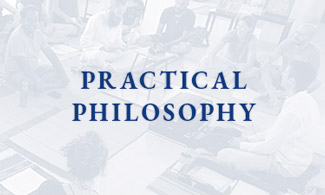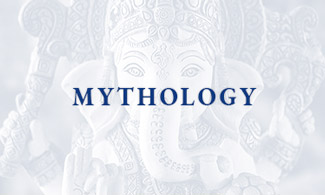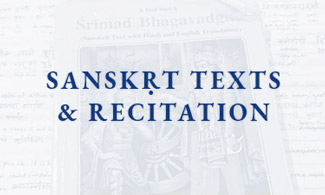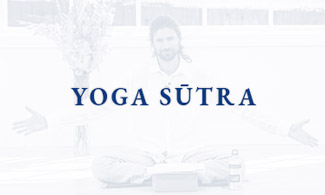
The Bhagavad Gītā: Reconciling Paradox and Making the Whole Field Sing
Weaving harmony into the fabric of life and making the whole field sing. A few brief introductory notes to the Bhagavad Gītā. A few notes following last Friday’s two hour talk on the Gītā
What’s in a name?
Yoga – unity, integration, balance, harmony, at-one-ment
Sūtra – stitch, thread; clear, distilled, condensed linguistic formula which shines its meaningful light out in all directions.
As my teacher Larry said so beautifully and memorably: ’The Yoga Sūtra-s are the stitches that weave together the fabric of unity.’
A sūtra is defined in Sanskṛt as being clear, concise, yet ‘viśvatomukham’ – facing in every direction: shining its light all around.
The Yoga Sūtra-s are like lighthouses, they can illumine our path, help guide our way and inform our progress wherever we are on our journey in the ocean of existence.
Just as with the Yoga Sūtra, the very name of the Bhagavad Gītā is instructive.
Bhagavat (which becomes Bhagavad when preceding Gītā) – glorious, venerable, totality, the Supreme Reality
Gītā – song
The Bhagavad Gītā is the song of totality. It teaches us, in a relatable, memorable, nourishing form, how to come to wholeness. It has been set down in beautiful, magisterial poetry, full of vivid images and memorable verses. Its teachings describe how we can harmonise the whole field of our experience, ‘make the whole field sing’, bring ourselves into attunement, rhythm, at-one-ment, here in the grounded reality of life.
The setting is right here
The grounded reality of life: aka, the battlefield.
Mmm, yes, this battlefield business, what’s going on here?
Why is this most treasured text of the yoga tradition set between these two huge armies on a battlefield? Isn’t yoga all about peace?
Sure, it is, and that’s why I’m practising, because I’m not yet established in that deep, robust, unshakeable peace. The battlefield setting of the Gītā is richly symbolic in many ways. One way is how it locates the discourse in the reality of the field of our own psyches. The leaders of the warring parties are cousins. For a significant part of their lives, they grew up together, just like different parts of ourselves. And, just like different parts of ourselves, these sets of cousins occupy and vie for authority in the same field. Which field? The Gītā tells us explicitly. This ‘battlefield’ right here that is the arena of our own life, consciousness and experience.
On the one side of this field we have the Pāṇḍava-s, symbolising our purer, higher instincts and the qualities that would urge us towards harmony and wholeness. On the other, we have the Kaurava-s, representing our limiting conditionings: our tendencies driven by fear, and based on previous actions and experiences, our protect-the-known-comfort-zone blinkered habits, our short-termist, ultimately self-sabotaging empatternings. When we look at the field of our own experience, perhaps we may recognise such forces, and such a split, within ourselves.
Have you ever done anything that was not in your highest interest? I can only answer ‘yes’. Has their ever been a day gone by when I have not done something that was not in my highest interest? Here, I struggle to answer other than ‘no’! Though I also recognise that sometimes I do act in accord with my conscience, and this brings its own reward. In other words, the battlefield is right here, my own body-borne field of awareness and experience.
Practice: it’s a no-brainer
So, this field of splintering factions is not unknown to me. Which of the warring programs do I want to run? Do I want to make the whole field sing? Or am I content to subsist in a clanging cacophany of unnecessary self-sabotage?
Aiie! It’s a no brainer isn’t it? Yes, and yoga is a no-brainer. It cannot be experienced by the mind alone, but by the whole system working as a collective. By all the parts being acknowledged and included so they can participate and play together such that we become a true individual. An individual in the sense of one who is no longer susceptible to being divided or split, but who is attuned to the ways of working as a cohesive, integrated whole. Yes, Yoga is about fostering peace, but in order to come to integrated wholeness and lasting peace, we will most likely have to face our self-sabotaging habits, our shadow sides and schismatic tendencies. So the setting of the Gītā on the battlefield, which may seem at first glance paradoxical, is actually very realistic.
Yoga and the reconciliation of paradox
When we start studying and practising yoga, we don’t usually have to go far before we encounter paradox. And yoga is about reconciling paradox.
The Gītā guides us from the ongoing conflict of self-sabotage towards the ‘peace that passeth understanding’. It invites us out of the lose-lose situation of denying our conscience for the illusion of short-term gain or comfort. As one of my Indian teachers says, when we ignore or betray our conscience, we are damned. Not in the sense of being sentenced to eternal hellfire, but in the sense that when we go against our conscience, we will burn for it, sooner or later. Instead, the Gītā invites us into the win-win situation. When we heed our conscience, when we make a sincere effort, nothing is lost. If we get what we were aiming for, we enjoy it with a clear conscience. If we ‘fail’, we still rest easy, knowing we did our best.
To win in yoga, on the battlefield of life, does not mean to conquer, vanquish, destroy or subdue our enemies in the sense that these words may immediately connote. If we go around trying to kill our enemies, what happens? We just create more emnity. Yoga is about cultivating a lasting peace. The campaign of yoga is to transform the battlefield into a dancefloor, in which the seemingly opposed forces can meet and draw out each others’ complementary potential.
As we have mentioned, the different factions, Pāṇḍava-s and Kaurava-s, grew up in the same field, the same body. Our very body is the battlefield of the Gītā, the setting for this play of yoga. If we go around trying to vanquish or destroy parts of ourself, it is highly likely that we will perpetuate self-sabotage. Instead, yoga asks: can we steadily, patiently, courageously face our own demons, confront our own dark side, acknowledge our own woundings and partialities and invite a robust and well-rooted integration?
A warrior’s courage to venture beyond the known
The teacher in the Gītā is Bhagavān Śrī Kṛṣṇa. Literally, Kṛṣṇa means ‘dark’ or black. He symbolises the wisdom that is always with us, though it may be concealed deep inside the cave of our hearts. In order to access this innate wisdom, we may need to muster courage and slow down, so we can climb out of the grooves of our automated patterns. We may need to probe and fathom the darklands of our psyches, the neglected hinterlands of our kingdom. This is required if we are to become a responsible sovereign for this field of our own life.
Kṛṣṇa gives the teaching to his student and friend in need Arjuna, in a chariot. In yoga, just like the battlefield, the chariot is another image that is used to represent the individual conscious human being. As he teaches, Kṛṣṇa seems at times to give paradoxical guidance. He tells us, for example, that we have to claim responsibility for our actions and experience, that we are the sovereigns of our lives. Right from the beginnning Kṛṣṇa is very clear, we had better get up, stand up and claim this sovereignty. And when something is inevitable, don’t waste time or energy dwelling on lamenting it, rather channel your resources to meet it skilfully. However, Kṛṣṇa also makes very clear that the best solution is to surrender, to offer everything to Him, in the sense of the ultimate reality… So sovereignty and responsibility on the one hand, and surrender and consecration on the other. Taking full responsibility for our actions, but giving up expectation over their fruits or outcomes. It can seem like a paradox, but practice resolves it. If we are going to offer our thoughts, words and actions, then we have first to ‘own’ them, in the sense of taking responsibility for them. In order to make the chariot of our bodily vehicle our means of offering, we cannot be asleep at the wheel, (or the reins if we are thinking of an older-school chariot), rather we have to take responsibility for how we direct its capacities. In order to surrender, to offer everything to that which we consider the highest, in order to consecrate our actions, we have to be present, vigilant, constant.
Practice is all the time
Another thing the battlefield setting reminds us is that there is no situation that is a barrier to yoga. Indeed, the Gītā highlights how challenging situations can actually bring great opportunities to unveil our deeper capacities. Further, the setting also makes clear, we do not have to wait until the conditions are just right. They are right here right now. Working to keep in tune and stay in rhythm requires a constant presence. Yoga is a lifelong practice. It is everything we do. In this field of sound and vibration, the song is always playing. The time-tested, practical and robust teachings of the Gītā invite us to steadily tune in more and more subtly to our innate yogic capacities: for steadiness, harmony and contributing to making the whole field sing.
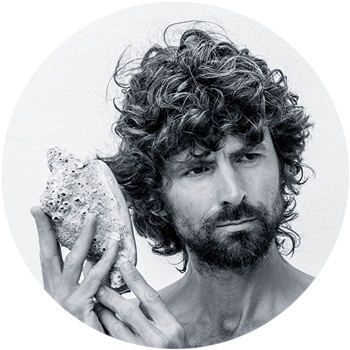
James Boag | Whole Life Yoga
The yoga of the whole human being. Practical philosophy, storytelling, movement, inquiry, looking in ways that reach beyond our habitual ways of looking.
Listen to James’ unique whole life yoga perspectives on the WHOLE LIFE YOGA podcast.






